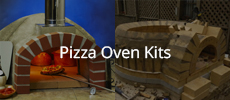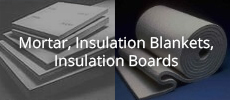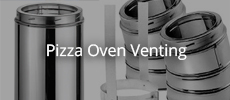I am just finishing my dome and i have the first arch built. My final design is the pompei oven with second arch and chimney. Im keen to get curing and cooking, can build the seconfld arch and chimney after the oven curing , or does the asecond arch and chimney require a cure? Reason im asking is im up against time.
Announcement
Collapse
No announcement yet.
Curing oven without second arch and chimney
Collapse
X
-
Andyp I applaud your enthusiasm; but, rushing parts of the build process will lead to less than optimal results.
First, let's distinguish between curing and drying. Concrete products harden by a chemical process in the presence of water, i.e. curing. The drying process is used to work moisture out of all of the refractory materials, bricks, mortars, pericrete, etc., as well as any moisture in any other insulation materials.
Proper curing (achieving the correct harness and density of concrete products) is accomplished by managing the components of the concrete product, the ambient temperature and the time moisture is retained.
Accelerated drying (adding heat too soon) expedites the curing process and actually decreases the strength of concrete.
You can certainly dry the oven before adding the blanket insulation, but that would have to be done really slowly. If you read enough builds on this Forum, you will notice a theme of how a lot of builders start the drying fires with the intent of going "low and slow" but they often lose control and push the temps higher than intended. As descried by the experienced builders on this site, the risk of firing too high and too fast without insulation on the dome is that a large temperature differential can be created between the inside and the outside of the dome, causing uneven expansion and risking too many or large cracks. Taken to the extreme, catastrophic failure could result. This makes sense if you think about how conductive refractory is. Heat builds up on the inside of the dome and conducts to the outside. Without insulation, the heat is lost to the atmosphere, keeping the outer part of the dome cool. There's a better chance of keeping the differential smaller with insulation.
You still need to go low-and-slow, but your chance of success is increased with insulation.
Regarding your specific question: Yes, just like the rest of your refractory, the second arch (and flue gallery if cast or brick) and chimney (if brick) needs to cure and be dried. The amount of heat conducted to the outer arch is dependent on positioning and if any separation (insulation material or air) is incorporated in your design.
I ran out of good weather and had to pause my build. I made sure my oven was completely cured then temporarily wrapped the dome in ceramic fiber blanket and did a week of slow drying fires. I then moved the blanket into dry storage and tarped the oven over the winter. The next spring, I completed the oven and then repeated the drying process. I still have some small cracks show up when the oven is at full temp, so I wonder how bad it would have been had I rushed the process.
Be cautious how you proceed. Few things are worse than negatively impacting your build after so much time, effort and money have been consumed.
Good luck!
-
Thanks Giovanni that’s an excellent explanation. I might add that I have always disliked the term curing fires because of the confusion it creates with the hydration process that's referred to as damp curing, where a chemical change in the cements used occurs. Heat can also be used to cure certain materials to create chemical changes, but in the case of oven building, using either mortar or castable, at the low temperatures we use (under 500C) to dry our ovens, where we are simply removing mechanical water, no chemical changes occur. So, strictly speaking, “curing” is an incorrect term to use when describing this process. I prefer to call them drying, rather than curing fires. Building an oven is a slow process and sufficient time for both damp curing and subsequent slow drying of the retained free water is essential. The worst that can happen is for the rapid expansion of steam which can cause steam spalling (exploding from the centre of the wall), although micro cracking, which is not visible by the naked eye can also occur, leaving behind tiny cracks that can grow with subsequent firing cycles. We’ve seen problems when builders hasten these steps in order to reach a deadline or over enthusiasm to get to pizza temperature in a hurry. Whilst pizzas may cook in super fast time the opposite is the case for building, drying and firing your oven if you want to be kind to it.Last edited by david s; 08-13-2025, 02:41 PM.Kindled with zeal and fired with passion.
Comment





Comment